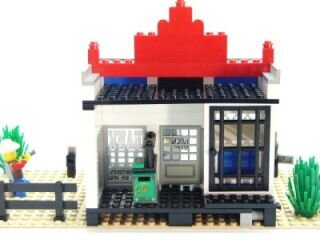Hurdle Rate Definition, Formula & Examples

First, it can lead to suboptimal decision-making if the wrong discount rate is used. Second, it can result in overinvestment in certain projects or underinvestment in others. Finally, it can create tension between different decision-makers within an organization.
For hedge funds, the rate is the minimum rate of return required before they become eligible to unlock the incentive fees. However, Yieldstreet has opened a number of carefully curated alternative investment strategies to all investors. Say, for example, that Company ABC is considering investing in a new plant. It expects that, with the enhanced capacity, it can heighten sales, resulting in an eight percent annual return. Its WACC is four percent, meaning that investors anticipate profits of four cents on the dollar.
Tips for Investing
In order for an investment to be viable, it must meet or exceed the investor’s rate. If the rate of return is lower, the investor may choose not to go ahead. Hurdle rate is a term describing the minimum return an investor requires before deciding to buy a security or make another type of investment. That is, if an investment promises to provide a return that equals or exceeds the hurdle rate, the investor may decide to go ahead with it. An investment that offers a return below the hurdle rate is unlikely to be pursued. Use of a hurdle rate has some limitations and may not be the only consideration an investor looks at, but it is widely used when selecting investments.
- SmartAsset Advisors, LLC (“SmartAsset”), a wholly owned subsidiary of Financial Insight Technology, is registered with the U.S.
- The implied equity risk premium is forward-looking instead of historical.
- The rate is determined by evaluating risk, capital costs, existing opportunities for business growth, rates of return for similar investments, and other factors.
Any historical returns, expected returns, or probability projections may not reflect actual future performance. Yieldstreet provides access to alternative investments previously reserved only for institutions and the ultra-wealthy. Our mission is to help millions of people generate $3 billion of income outside the traditional public markets by 2025. We are committed to making financial products more inclusive by creating a modern investment portfolio.
Project analysis
Ultimately, whichever method you use to calculate it, it’s important to think about what you’re trying to achieve with your investments. Consider your risk tolerance and desired returns when setting the rate. Doing so will help you make better decisions about whether or not to pursue an investment. If the NPV is higher than zero, the project has met its minimum hurdle rate. The business has to get over the hurdle rate in order to actually make a profit on its investments.
If a project has a hurdle rate lower than the IRR, the company will decline it. Companies can also compare this rate for various projects to determine the highest returns they can get. You may also encounter the term hurdle rate in the context of hedge funds. Here it indicates the minimum rate of return a hedge fund needs to produce before it can earn a performance fee. In this lesson; however, we will focus on the use of hurdle rate in corporate finance. While it is relatively straightforward to evaluate projects by comparing the IRR to the hurdle rate, or MARR, this approach has certain limitations as an investing strategy.
If the company’s internal rate of return was only 3%, it wouldn’t meet the hurdle rate and the expansion shouldn’t be approved. On the other hand, if the company can achieve an internal rate of return of 7%, it should go ahead and build the new building. Based on the historical risk premium of the S&P 500, the average U.S. equities risk premium from 1926 to 2020 was 6.43% higher than risk-free return rates. The risk-free rate of return at this time is 3.0% based on the 10-year bond rate for the United States Treasury. The historical risk premium of the S&P 500 rate of return over the U.S. Treasury 10-year bond may be used by investors to estimate the risk premium.
Hurdle Rate Factors
When analyzing a new project, the manager may use the conservative project’s rate of return as the MARR. The manager will only implement the new project if its anticipated return exceeds the MARR by at least the risk premium of the new project. By adding a risk premium to the cost of capital (WACC) in determining the hurdle rate, the managers of ABC Inc. can make a fair comparison between projects. Just because a low risk project does not look as attractive on paper due to smaller potential cash flows, does not make it an unworthy selection.

Also, when the economy is facing an expected mild inflation, it might impact the final hurdle rate by adding an extra 1% or 2%. Finally, the interest rate should be considered as an opportunity cost, hence, a high interest rate leads to a high hurdle rate. While the hurdle rate is a very common technique used to evaluate projects and investments, it has its limitations. Second, the hurdle rate might reject projects or investments with high dollar values. Third, the hurdle rate might not be stable as the cost of capital is continuously changing. The hurdle rate is often set to the weighted average cost of capital (WACC), also known as the benchmark or cut-off rate.
In situations where a legal requirement exists regarding the completion of the project, the hurdle rate is a non-factor. Regardless of the risks or anticipated returns, mandated projects move forward to assure compliance with any applicable laws or regulations. It is used to conduct preliminary 5 steps to a successful payroll implementation analysis of proposed projects and generally increases with increased risk. When calculating the Present Net Value (NPV) of the stream of cash flows projected to be generated by the project in the future, the rate is the rate used to discount the project’s future net cash flows.
S&P Futures
The present value of the projected rental income at the hurdle rate is less than the initial investment of $250,000. If your goal is to break even after 10 years based on a 7.97% discount rate, this investment won’t do it. As the hurdle rate is 8% and the expected return on the investment is higher at 11%, purchasing the new piece of machinery would be a good investment.
PSERS Sues Aon, Alleging that the Consultant Is At Fault for … – Institutional Investor
PSERS Sues Aon, Alleging that the Consultant Is At Fault for ….
Posted: Tue, 01 Aug 2023 20:47:04 GMT [source]
The rate is used to evaluate new projects and investments, and is generally set at a level higher than the company’s overall cost of capital. The particulars and method used will naturally depend on the type of investment. Calculating the internal rate of return is another way to determine hurdle rate. For a project to go forward, the internal rate of return should be greater than or equal to the hurdle rate.
To discount the projects cash flows in determining a net present value
Hurdle rate is the minimum acceptable rate of return for an investment. It’s a benchmark investors, private equity firms, and management teams use to evaluate potential opportunities. For example, a company with a hurdle rate of 10% for acceptable projects would most likely accept a project if it has an IRR of 14% and no significant risk. Alternatively, discounting the future cash flows of this project by the hurdle rate of 10% would lead to a large and positive net present value, which would also lead to the project’s acceptance. It provides a clear-cut vision of whether or not the investment will be profitable, using factors like risk premiums and net present value as its basis.
The most common method is to use the weighted average cost of capital (WACC). The WACC takes into account the cost of equity and debt financing for a company. The cost of equity is the expected return that shareholders require, and the cost of debt is the interest rate on loans.

Before making a decision about an investment, companies calculate the project’s net present value (NPV). Using that information, they calculate its internal rate of return (IRR). For a project to be feasible for a company, its hurdle rate must be equal to or greater than its hurdle rate. There are several tools that companies can use to estimate the returns they can get on their investments.
Most companies use a 12% hurdle rate, which is based on the fact that the S&P 500 typically yields returns somewhere between 8% and 11% (annualized). Companies operating in industries with more volatile markets might use a slightly higher rate in order to offset risk and attract investors. The hurdle rate is a tool to evaluate whether an investment is worthwhile. It takes into account the cost of capital and the level of risk an investment carrier and sets a minimum acceptable rate of return.
Black Diamond Reports Second Quarter 2023 Results And Declares … – GlobeNewswire
Black Diamond Reports Second Quarter 2023 Results And Declares ….
Posted: Thu, 03 Aug 2023 21:17:09 GMT [source]
Usually, the risk premium is added to the cost of capital, or the weighted average cost of capital (WACC), to get a good estimation of the hurdle rate. Hurdle rates typically favor projects or investments that have high rates of return on a percentage basis, even if the dollar value is smaller. Additionally, choosing a risk premium is a difficult task, as it is not a guaranteed number. A project or investment may return more or less than expected, and if chosen incorrectly, this can result in a decision that is not an efficient use of funds or one that results in missed opportunities. Apart from WACC and risk premium, companies may also include other factors when calculating the hurdle rate.
For instance, if the minimum required rate of return of a project is 10%, it means that at precisely 10%, you can meet the project costs along with the risk premium you gauged at the beginning of the project. A risk premium, often assigned to a prospective investment, represents the expected amount of risk involved. The higher the risk, the higher the likely premium, based on the premise that the risk is of losing money, the higher the return should be. In other words, “risk” is the primary “hurdle” an investment must surmount to be worth it. Working with an adviser may come with potential downsides such as payment of fees (which will reduce returns).
